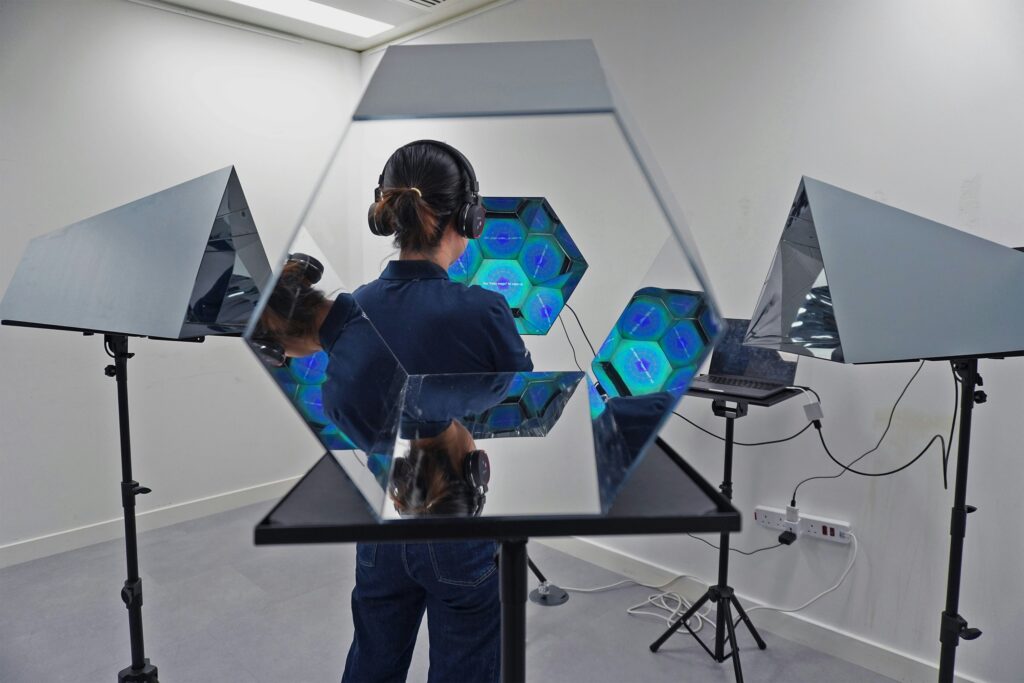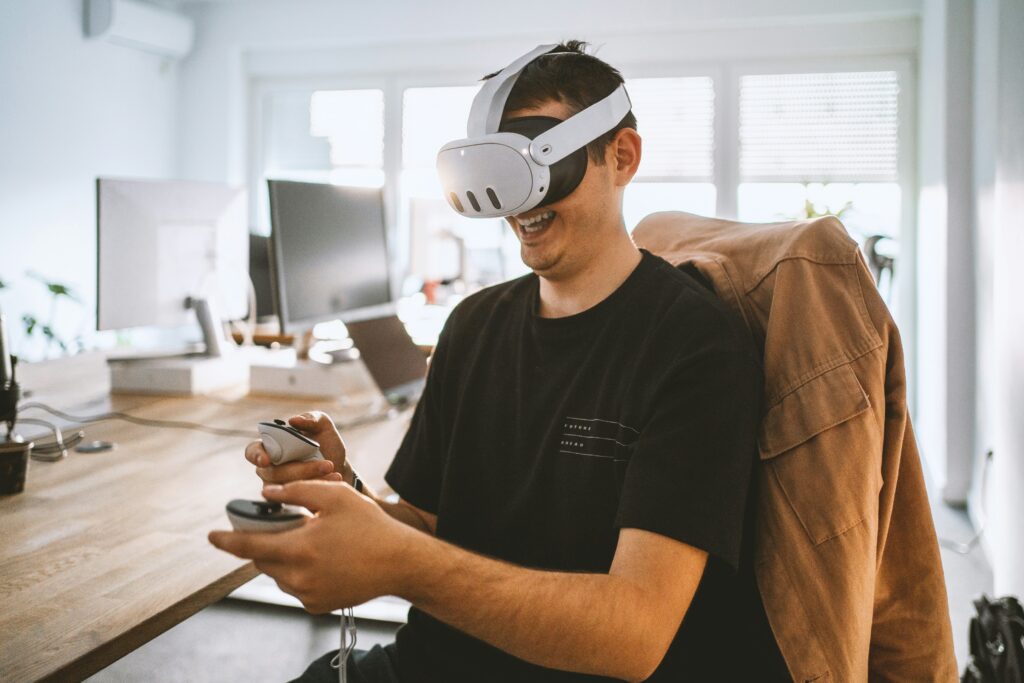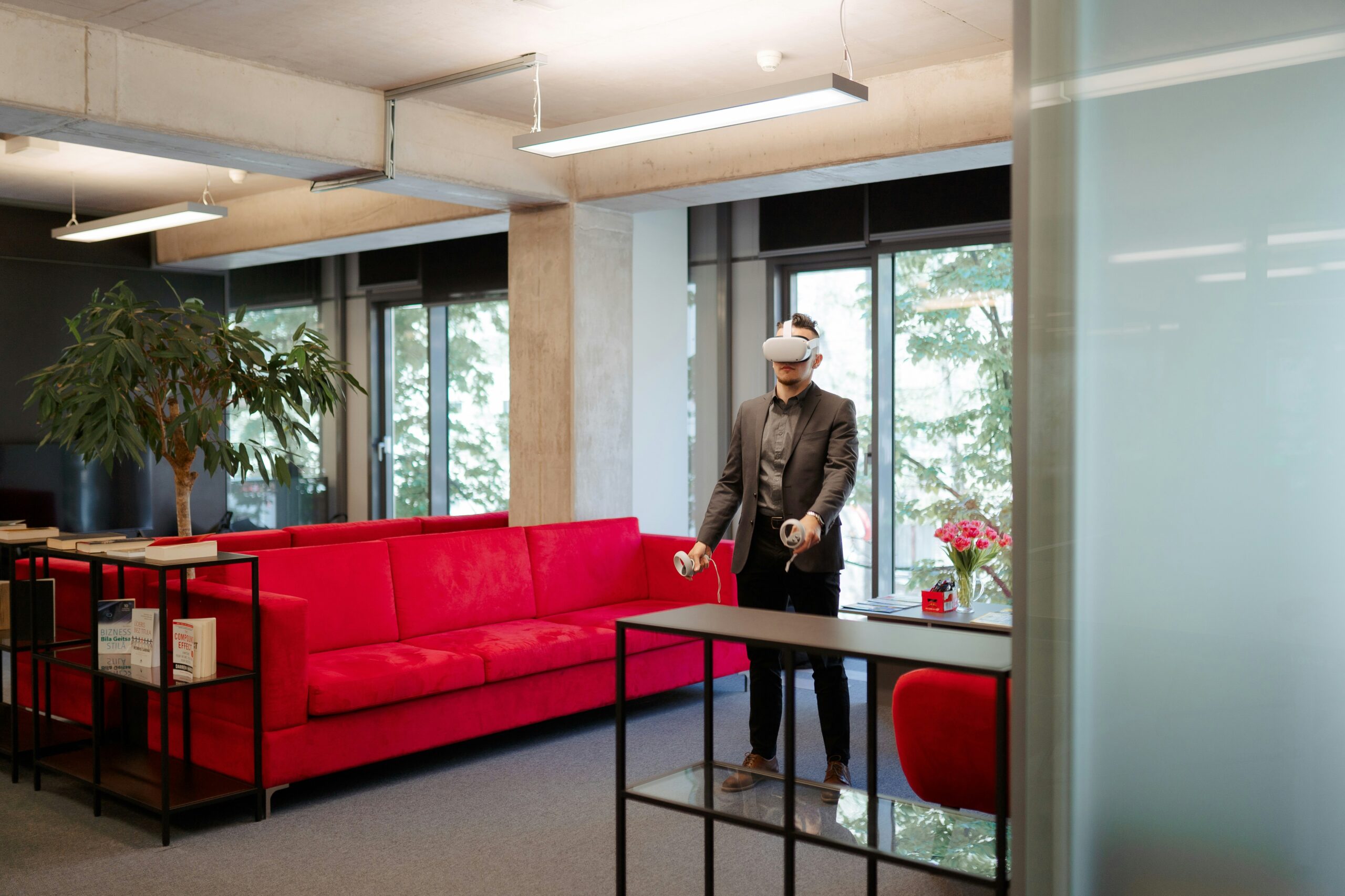Introduction
Remote work has transformed the modern workplace, but collaboration still faces challenges: miscommunication, lack of engagement, and “Zoom fatigue.” Enter virtual reality (VR) workspaces — immersive environments where remote teams can meet, collaborate, and interact as if they were physically together. But are VR workspaces truly the future of remote teams, or just another tech fad? In this post, we’ll explore how VR workspaces are evolving, their potential benefits, and the hurdles they must overcome.
1. Immersive Collaboration Beyond Video Calls
- Natural interaction: VR allows team members to move, gesture, and interact in ways video calls cannot replicate.
- Shared virtual spaces: Whiteboards, 3D models, and dashboards exist in the same space as participants, making brainstorming and problem-solving more interactive.
- Reducing “Zoom fatigue”: Immersive environments can help teams feel more present, focused, and engaged.

2. Use Cases Driving Adoption
- Design and engineering: Teams can manipulate 3D prototypes in real-time, accelerating product development cycles.
- Training and onboarding: VR simulations allow employees to learn processes or practice scenarios safely and interactively.
- Cross-border collaboration: Distributed teams can meet in virtual offices without worrying about time zones, travel, or physical limitations.
3. Technology Maturing for Business Use
- VR hardware improvements: Lighter, more comfortable headsets with higher resolution and better tracking make longer sessions feasible.
- Enterprise software: Platforms like Spatial, Horizon Workrooms, and MeetinVR offer tailored solutions for corporate collaboration.
- AI integration: Intelligent avatars, auto-generated meeting notes, and virtual assistants enhance productivity within VR workspaces.

4. Benefits of VR Workspaces
- Enhanced engagement: Immersive experiences increase focus, collaboration, and participation.
- Visual context: Being able to interact with 3D models, spatial data, and prototypes improves understanding and reduces miscommunication.
- Cultural cohesion: Virtual environments foster team culture, casual interactions, and social bonding, even across continents.
5. Challenges to Widespread Adoption
- Cost and accessibility: VR headsets and software subscriptions can be expensive for smaller teams.
- Learning curve: Employees may need time and training to adapt to VR environments.
- Physical discomfort: Motion sickness or fatigue may limit session length.
- Integration with existing tools: VR platforms must work seamlessly with project management, communication, and productivity software.
6. Are VR Workspaces the Future?
While VR workspaces aren’t likely to replace all remote collaboration, they offer a compelling supplement for specific use cases: immersive training, collaborative design, and team-building activities. As hardware becomes more affordable and software more integrated, VR workspaces could become a standard tool for forward-thinking organizations.

Conclusion
VR workspaces are no longer just sci-fi fantasies—they’re practical tools reshaping how remote teams collaborate. Organizations that experiment with VR today may gain a competitive edge in employee engagement, productivity, and innovation. While challenges remain, the potential to make remote work more interactive and immersive suggests VR workspaces are a promising element of the future workplace.




